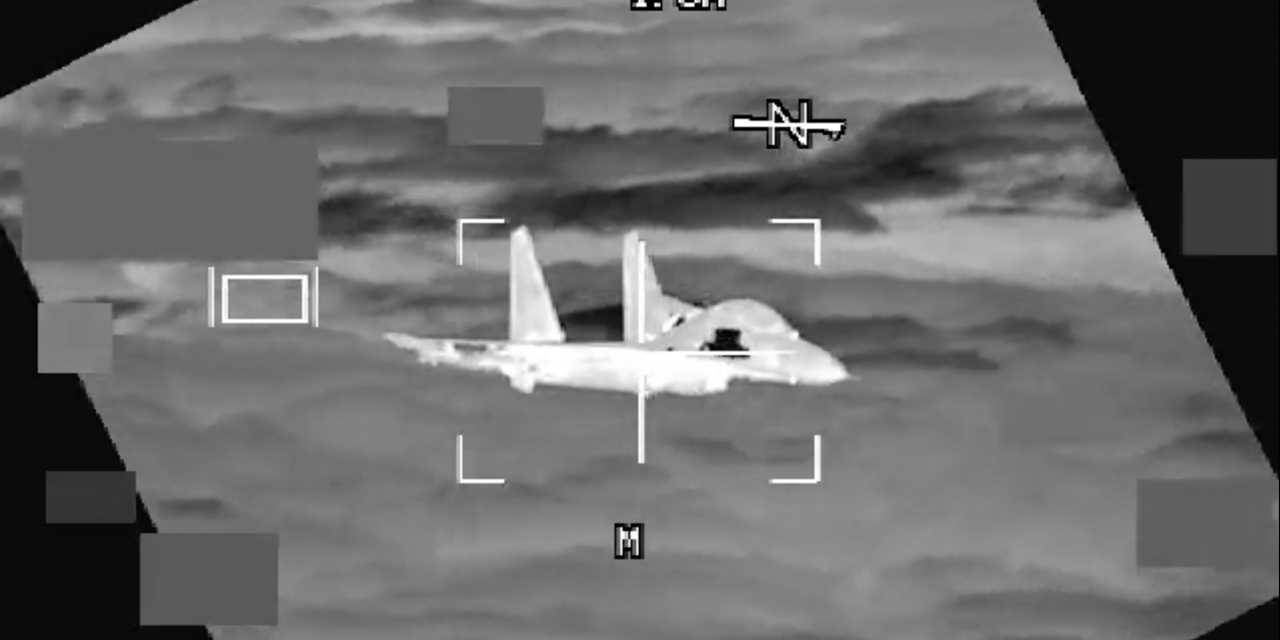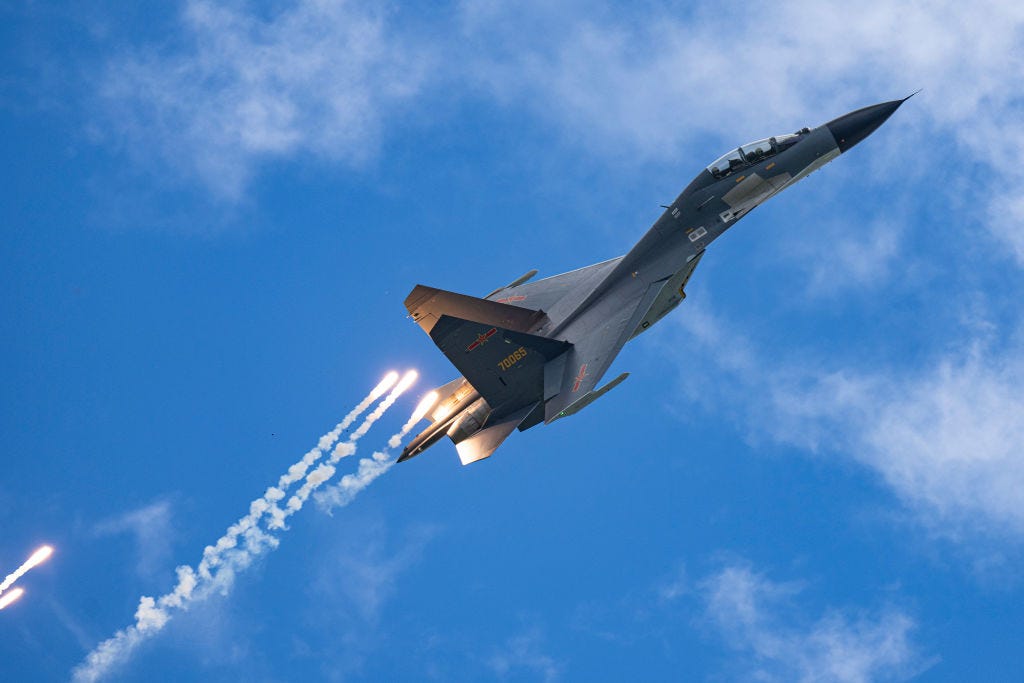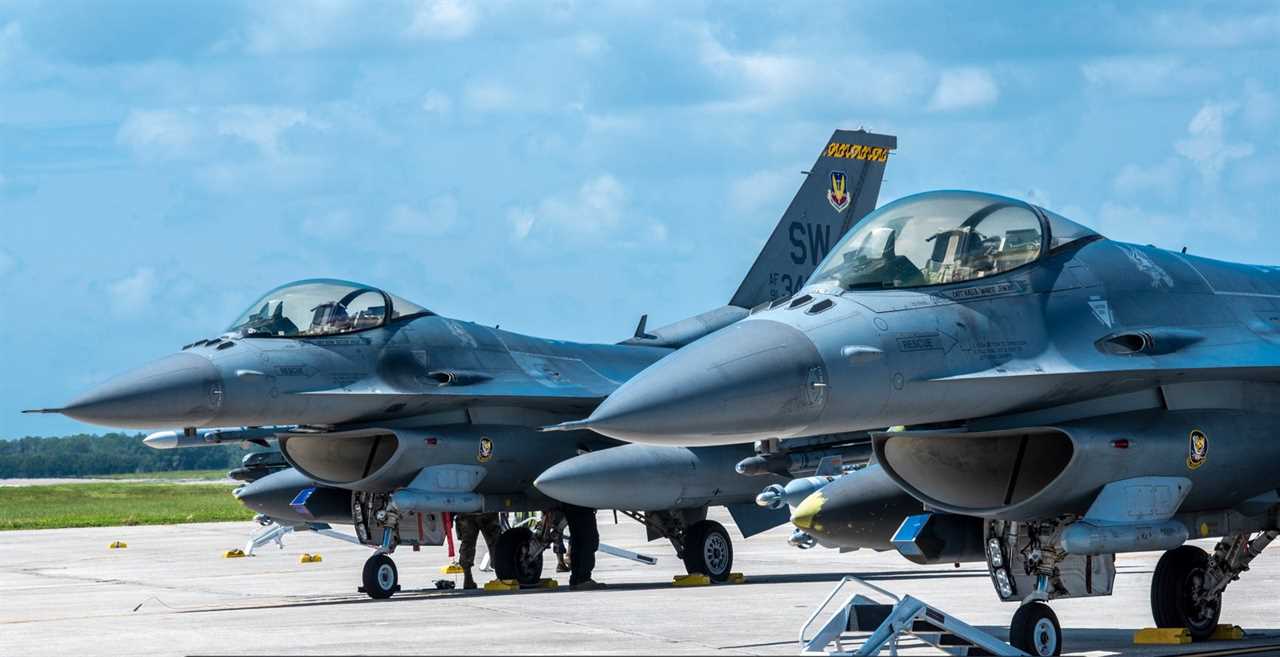
USINDOPACOM
- US officials released a video of a Chinese fighter jet intercepting a US aircraft over the South China Sea.
- The Pentagon has recorded a spike in close calls between Chinese and American aircraft.
- A former American aviator told Insider the incident highlights how Chinese pilots are "willing to challenge" the US in the area.
The US has been sounding the alarm on unsafe intercepts of American aircraft by Chinese fighter jets buzzing or crowding the planes, behavior that officials say threatens the US and other nations' abilities to operate safely in international airspace.
Although unsafe intercepts by Chinese pilots have long been a problem, the increased frequency of these incidents appears to reflect China's growing military might, the elevated abilities of its pilots, and a greater willingness for China to throw its weight around a bit against US aircraft and those of its allies flying in areas where the Chinese military is more active in pursuit of its interests.
"What we're witnessing is an increasingly competent and better trained Chinese flying cadre" that is "willing to challenge the US and allied flights occurring near the PRC air defense identification zone," retired Cmdr. Guy Snodgrass, a former naval aviator and TOPGUN instructor and defense official, said, referring to the People's Republic of China.
In late October, US Indo-Pacific Command (INDOPACOM) released a video of what it said was a Chinese J-11 fighter jet executing "an unsafe intercept of a US Air Force B-52 aircraft."
The Chinese pilot intercepted the bomber at night in what INDOPACOM called an "unsafe and unprofessional manner," accusing the pilot of demonstrating "poor airmanship" by closing at excessive speed and maneuvering in close proximity to the aircraft. It said that the J-11 got as close as 10 feet to the the B-52 while it was conducting lawful operations over the South China Sea in international airspace.
"We are concerned this pilot was unaware of how close he came to causing a collision," INDOPACOM said in a statement.
—U.S. Indo-Pacific Command (@INDOPACOM) October 26, 2023
In the video footage shared by the US military, the ranging indicators are blotted out, meaning it's impossible to tell the exact distance between the fighter and bomber, but the forward-looking infrared (FLIR) video footage itself shows the apparent Chinese J-11 fighter flying nearby the B-52, "certainly inside the 50-foot bubble," Snodgrass said.
"The intercept itself, while close, does not appear to be 'high energy' or with overly excessive closure speeds, as the Chinese pilot is able to pull abreast of the bomber," he said.
If the jet were to close at overly excessive speeds, then the Chinese fighter jet would have likely had to "underrun" the bomber, aggressively flying underneath it and then coming out in front while attempting to reduce airspeed.
That kind of maneuvering isn't seen in the video shared by INDOPACOM, although it's unclear if there is more footage filmed by the B-52 that was not shared by US officials. The B-52's fuselage blocks the view of the jet at what appears to be the closest point of approach between the aircraft.

Qian Baihua/VCG via Getty Images
The incident is the latest in what the US says is a troubling trend in aggressive and dangerous intercepts by Chinese pilots over the South and East China Seas. Intercepts are normal, and the US does carries them out regularly, said Snodgrass, mentioning that he has previously flown this type of mission in response to activity by North Korean and Russian aircraft. While America prioritizes professional flying, it is not uncommon for US rivals like Russia and China to engage in risky behavior in the air when American aircraft are on the receiving end.
"It's understandable that INDOPACOM is highlighting this approach with alarming language: they want to draw attention to the situation," he said, noting in the explanation provided to Insider that "the larger point is that all intercepts should be conducted in a safe manner with proper standoff distance that minimizes the chance of inadvertent collisions."
In October, the same month as the intercept, the US Department of Defense released its annual China Military Power Report and declassified a hoard of photos and videos it says show more of these intercepts, including Chinese fighters flying alongside, over, and underneath US aircraft sometimes at a distance of just 10 to 15 feet.
The US says it documented more than 180 coercive or risky intercepts by Chinese aircraft since fall 2021. That figure, as the DoD report explained, is more in just two years than the entire previous decade. In that same time window, the US documented around 100 such incidents involving allied and partner nations.
And these encounters came at a rather precarious time for US-Chinese relations. In that same military power report, US defense officials noted that "in 2022, the [People's Liberation Army] largely denied, cancelled, and ignored recurring bilateral engagements and DoD requests for communication."
Chinese behavior likely speaks to a bolstered confidence among Chinese military leadership to challenge US air power, as well as test its response, while pushing China's increasingly "excessive claims to manufactured territory in the South China Sea, such as with PRC's aggressive 'island reclamation' projects," Snodgrass said, pointing to a China's dominating foreign policy in the area, which is one where the US military is also very active.
"These strategic changes bring tactical units like fighters, bombers, reconnaissance planes, and ships into more frequent and closer contact as the US continues to promote a policy of unfettered access" international waters and airspace.

US Air Force photo by Airman 1st Class Lauren Cobin
The radio silence from China has largely continued into 2023, US officials said, adding to increased concern "of an operational incident or miscalculation spiraling into crisis or conflict."
Snodgrass, a former defense official in the Pentagon, told Insider that whether or not a mishap, like an unsafe intercept gone wrong, spirals into a crisis or conflict really depends both on the overall state of US-Chinese affairs "at any given moment, as well as what each party believes they could gain from the incident."
"Should a PRC aircraft recklessly collide with a US or allied plane, the public rhetoric would increase significantly to apply additional pressure against PRC actions. Would such a collision, especially an unintentional one, lead to open conflict? Almost zero chance unless the larger strategic environment shifts significantly from today's regional status quo," he said. Still, probably best not to find out though.
Read More
By: [email protected] (Chris Panella)
Title: Risky intercepts show China's fighter pilots are 'willing to challenge' the US as their planes increasingly meet in the air, former aviator says
Sourced From: www.businessinsider.com/chinas-pilots-willing-challenge-us-risky-intercepts-former-naval-aviator-2023-11
Published Date: Thu, 09 Nov 2023 20:25:58 +0000
.png)





